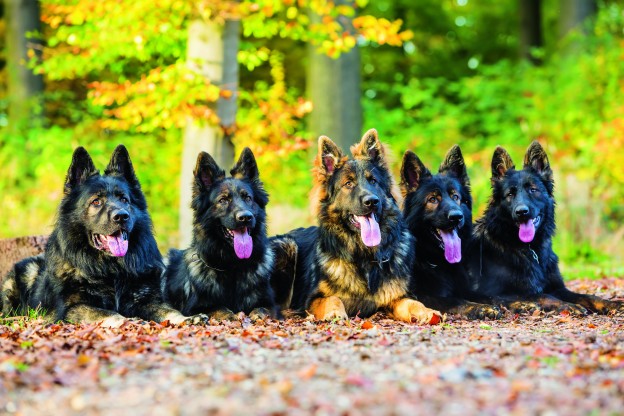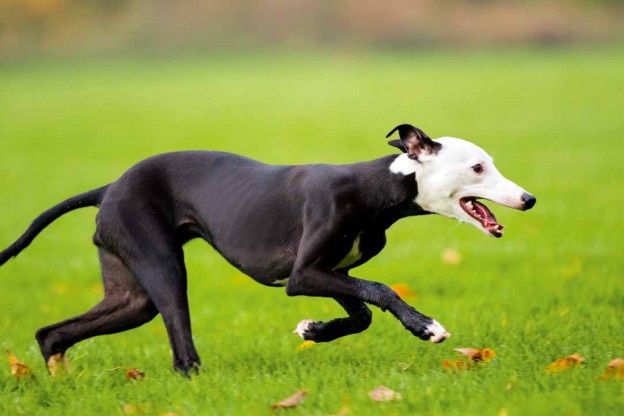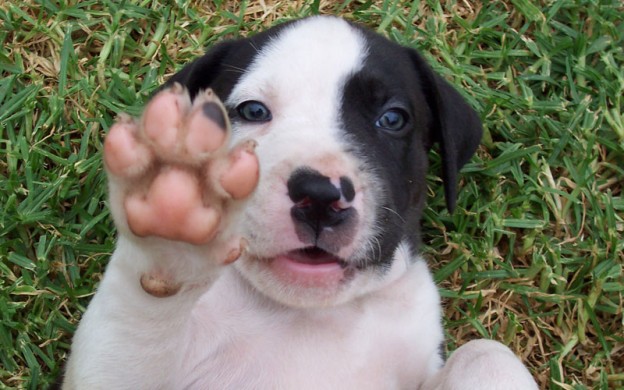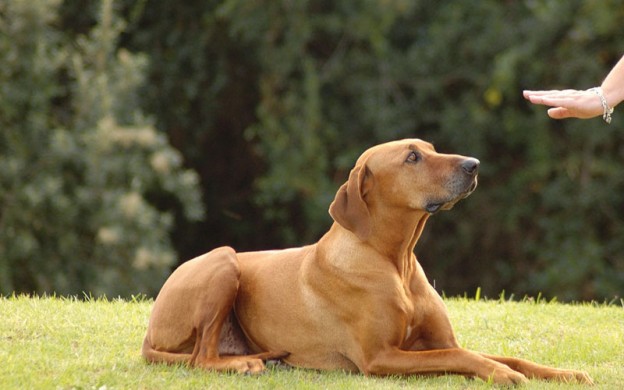Delta Behavioural Trainer Karin Larsen Bridge, from Get S.M.A.R.T (Successful Motivation And Reward Trained) Dogs, explains the different styles of walking with your dog.
Heel is the term most often associated with walking a dog in a controlled fashion. The term was first used by field hunters as they took their dogs out with them to retrieve birds. The dogs were required to remain close to the hunters left leg so as not to frighten game or get in the way of the shooters aim. Though most dogs today will never be working in the field, the term has endured as the ideal position for a dog to assume when walking with their owner but is it? The answer is both yes and no.
Before you train your dog to walk on a lead you need to have a clear picture of exactly the walking position you want from your dog and what your cue or signal for that behaviour is going to be. It may be that you need to teach two or three different cues for two or three different ways of walking on lead.
Walkies
For an everyday exercise walk you may prefer to allow your dog the relative freedom of a long, loose lead and permission to stop and sniff from time to time. Expecting your dog not to sniff at all on a walk is like offering to take a person for a tourist drive and then blindfolding them.
Smell is the dogs major information tool for assessing the world and therefore provides a good deal of mental stimulation. The main criteria for this type of pleasure walking should simply be that your dog must not pull. An easy cue such as walkies or lets go would be suitable for this type of leash walking.
Heel
If you would like to compete in obedience competitions, the position of the dog becomes of utmost importance. Your dog needs to stay precisely in line with your left leg regardless of your pace normal, fast or slow the direction you turn, the angle of your turn, whether you are moving forward or backward or whether your dog is adopting a stationary position sit, stand or down.
Further, this position should be executed with animation and rapturous attention in anticipation of your next command. It is obvious that a dog could not maintain this level of heel work for long periods of time and that it would be silly to expect it on your morning exercise walk. It makes sense to have a different cue for this exacting behaviour. The cue heel as well as the handlers more formal body posture and movement tell the dog a different level of performance is required to a simple walk around the block.
Close
Close is a suitable cue for a walking position somewhere between these two extremes. Close requires the dog to stay roughly in a two-foot radius on one side of your body rather than cross from side to side. The position is not as precise as heelwork, but provides greater control than loose lead walking.
Because these three styles of walking have different criteria from simply don’t pull to perfect position and attention they require a different cue word to help your dog understand what you want and when you want it. If you mix them all up together and use heel as a generic term for go, your dog is unlikely to perform any of the three types of walking really well.
Outside the competition arena, a loose lead walk and a close position is probably all that you require. (For a full explanation of how to teach No Pull Walking see Dogs Life Jan/Feb issue 2006). Where space allows it, a loose lead walk is the ideal way to provide physical and mental stimulation for your dog, howe’ver there are many times when more control is required.
The Close position is ideal for crossing busy roads or walking through crowds at shops or schools, or at the vet. Close position can and should be practised at regular intervals whenever you are out walking your dog as a quick check-in and control exercise.
Teaching Close
Step 1: Naming close position
To teach your dog to be close, make your dog sit and take up a position next to his right shoulder. You should both be facing forward as though you were about to step off on a walk. Say close and slide a treat down your left leg to the dog. Repeat five to 10 times at least twice a day for a week or two. (The left side is traditionally the correct side, howe’ver you may choose whichever side you prefer as long as you are consistent.) You are painting the picture of what close looks like. In close position your dog sees your left hip, shoulder and side of face. He will learn that this is a good position to be in. At this stage all you are doing is making an association between this picture and the word or cue close. It does not matter that the dog is not moving, close is first and foremost a position relative to you whether you are stationary or not.
Step 2: Add a hand signal
Lure your dog into close position. This is especially useful for when your dog is already ahead of you, such as on a loose lead walk. Hold a treat in your left hand, show it to your dog, then guide him back past your left leg. This will be easier if you also step back with your left leg. Bring your leg and dog forward together then release the treat when the dog is in close position at your left side. This would be a stand in close position. Alternatively, once your dog has moved into close position, remove the lure briefly, take a few steps together then ask for a sit followed by the treat. You are now adding a little movement while maintaining close position. Fade the food treat from your hand and your lure will become the hand signal for moving into close position. Accompany this hand signal with the cue word close.
Step 3: Adding movement
Spend a couple of minutes a day walking in a 10-metre circle (so you don’t have to worry about turning or running into things). Every time your dog is near your left leg, praise with a distinct word such as yes! and dispense a treat through your left hip, knee or ankle, depending on the size of your dog. The idea is to create a sweet spot by your side where good things happen to dogs. The name for this sweet spot is close. Try hard not to tighten your lead or to physically force your dog into close position. We want the dog to choose close position because he has learnt it is a good place to be. If you need to physically force your dog into position, your dog has not yet understood the exercise and you are going to land up with very tired arms! Train the brain and the dogs muscles will take care of the rest.
Alternatively …
Teach the meaning of close as per Step 1 outlined above. Now take one step forward and ask your dog to sit again still in position by your left leg. Treat in position from your left leg dispenser. Next, take two steps, then three, never allowing the dog to drop behind or shoot ahead. This method often works well with a quieter, slower dog that is likely to lag if you walk briskly in a circle.
Instead of allowing the dog to lag and begging him to catch up, you simply do not continue forward unless the dog is in close position. Add one step a day and you’ll be able to cross a road in close position in under two weeks.
Pace yourself
To perfect your controlled walking, teach your dog cues for walking slowly and quickly. With your dog in close position, speed up and say quickly!. To slow up exaggerate a slow creep as though you’re sneaking into your house late at night as you say steady. Your dog will really enjoy responding to your changing body language as you play this keep-up game. Say quickly in a slightly higher, more excited voice, and steady with a lower, slower intonation. These sounds have been found to be universal in their effect of speeding up and slowing down a wide variety of domestic animals.
Which walk when?
Alternate loose lead walking with the close position on your daily walks. Drawing your left hand back and the word close will bring your dog into close position. Keep your eye on your dog in this position, letting him know that this is a more focused, formal type of walking for confined areas where more control is needed. When the situation allows it, loosen and lengthen your lead to cue walkies and your dog will move out again.







